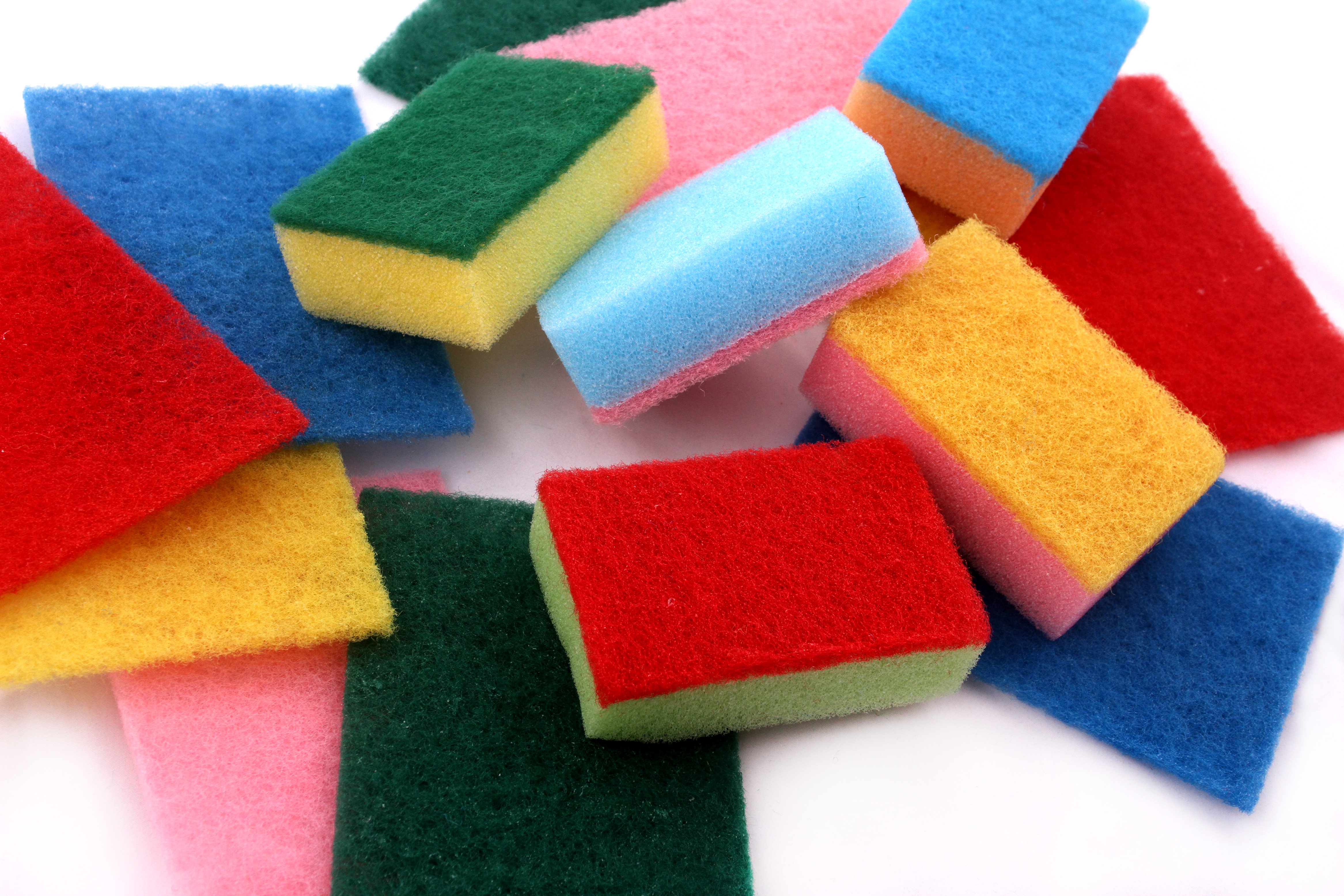Send your question to Umbra!
Q. I wash dishes all the time, and those yellow and green sponges will only last a few weeks at most. I don’t know what they’re made of, so I don’t know in which bin to throw them or how to reuse them. Can I make a recycled mattress or couch with a thousand used sponges? Is there any charity or artist that collects old sponges? Is there a good, affordable, practical, and eco-friendly alternative?
Arne P.
Calgary, Alberta
A. Dearest Arne,
Sponges truly are the multitaskers of the cleaning crew. Not only are they scrubbing our dishes, they’re also busy wiping counters, washing cars, applying makeup, brightening windows, and exfoliating our skin in the shower – and this week, likely pulling overtime sudsing the stuffing off your company platters. It doesn’t seem right to reward such service with a one-way ticket to the trash, but unfortunately, that’s exactly where many sponges are bound.
Your typical grocery-store kitchen sponge is made from polyurethane, a petroleum-based material that can’t be recycled or composted. Even worse, some sponges billing themselves as antibacterial are soaked with triclosan, that ever-plaguing chemical linked with liver and thyroid issues and toxic to aquatic life.
Luckily, there are easy alternatives. If you’re hooked on a sponge’s absorbent, suds-producing quality, switch over to a 100-percent cellulose brand (it should tout its biodegradable nature on the package). These come from some combination of veggie-based ingredients like wood pulp and cotton fiber, clean at least as well as the plastic ones, and can be composted at the end of their useful lives (cut them into smaller pieces to speed their reincarnation in the compost heap). Incidentally, the loofahs and sea sponges in your shower can also join their cellulose cousins in the pile.
But you can do even better, Arne: What about a reusable handmade scrubber knit from cotton yarn? Or perhaps the top option: A rag snipped from a retired towel, sock, or T-shirt can pinch-hit for a sponge in most applications. It won’t soak up water like a sponge, but I can vouch that it’ll clean your forks just fine — plus, you can wash and reuse it practically ad infinitum.
Convinced to switch? I hope so. But what to do with all those conventional sponges you’ve racked up? I haven’t found an upcycled couch or mattress yet (hey, if you’re inspired, why not try it?), but there are scores of other ideas for reusing those porous leftovers. Like the kids’ toys, bike-pedal pads, packing materials, and peppermint mouse-repellers found here. Or use them to keep potted plants well-watered. Sprout seeds in them, use them as grip pads on garden tools, have them cushion your soap, or glue them under furniture to prevent scuffing, as you’ll see here. Or follow these tips to whisk away lint or make painting tools. I could go on, but I think you’ll see that sponge upcycling is limited only by your imagination.
Just a few more tips before I let you loose to experiment with spongecraft, though. If you’re going with biodegradable sponges, extend their lives with regular two-minute trips through the microwave to kill the inevitable germs that see your kitchen sponge as a new luxury condo. And if you can, think about replacing all that handwashing with an Energy Star dishwasher: You’ll slash your energy and water use and reduce the workload on your absorbent kitchen crew.
Absorbently,
Umbra



